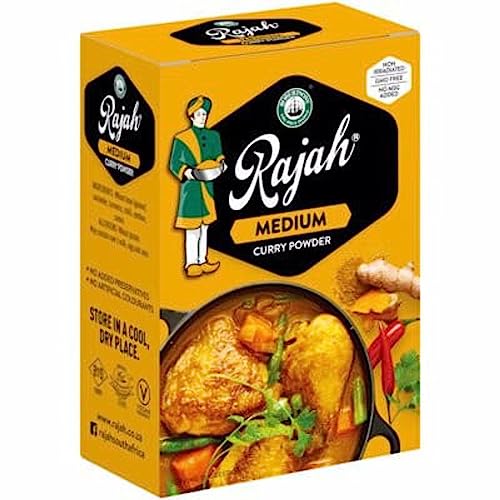The Beef Grinder Machine, Expert Recommendations
When it comes to transforming whole cuts of beef into delectable dishes, a reliable beef grinder machine is an essential tool in any kitchen arsenal. From crafting homemade burgers to preparing savory meatballs, these machines offer convenience and control over texture and flavor. But with a multitude of options available, finding the perfect beef grinder machine can be a daunting task. Fear not! We've done the legwork to uncover the top contenders that combine power, durability, and ease of use. Say goodbye to store-bought ground beef and hello to culinary creativity with our curated selection of the best beef grinder machines on the market. Let's grind our way to gastronomic greatness!
Compare Products
- KR Score9.4
Kitchensradar.com established a ranking system called KR Score. KR Score is unaffected or unrelated to any websites run by manufacturers or sales agents. Learn more
- BrandKitchenAid
- KR Score9.0
Kitchensradar.com established a ranking system called KR Score. KR Score is unaffected or unrelated to any websites run by manufacturers or sales agents. Learn more
- BrandKEENSTAR
- KR Score8.8
Kitchensradar.com established a ranking system called KR Score. KR Score is unaffected or unrelated to any websites run by manufacturers or sales agents. Learn more
- BrandSunmile
- KR Score8.8
Kitchensradar.com established a ranking system called KR Score. KR Score is unaffected or unrelated to any websites run by manufacturers or sales agents. Learn more
- BrandCHEFFANO
- KR Score8.8
Kitchensradar.com established a ranking system called KR Score. KR Score is unaffected or unrelated to any websites run by manufacturers or sales agents. Learn more
- BrandAAOBOSI
- KR Score8.6
Kitchensradar.com established a ranking system called KR Score. KR Score is unaffected or unrelated to any websites run by manufacturers or sales agents. Learn more
- BrandAAOBOSI
- KR Score8.4
Kitchensradar.com established a ranking system called KR Score. KR Score is unaffected or unrelated to any websites run by manufacturers or sales agents. Learn more
- BrandKUUNLESIN
- KR Score8.4
Kitchensradar.com established a ranking system called KR Score. KR Score is unaffected or unrelated to any websites run by manufacturers or sales agents. Learn more
- BrandYabano
- KR Score8.4
Kitchensradar.com established a ranking system called KR Score. KR Score is unaffected or unrelated to any websites run by manufacturers or sales agents. Learn more
- BrandParmedu
- KR Score7.0
Kitchensradar.com established a ranking system called KR Score. KR Score is unaffected or unrelated to any websites run by manufacturers or sales agents. Learn more
- BrandCucinaPro
Last update on 2024-05-30 / Affiliate links / Images, Product Titles, and Product Highlights from Amazon Product Advertising API
While the terms "meat grinder" and "meat mincer" are often used interchangeably, there is a slight difference between the two:
-
Meat Grinder: A meat grinder is a kitchen appliance used to grind meat into smaller pieces or various textures, ranging from coarse to fine. It typically comes with different grinding plates or discs that allow you to achieve the desired texture of ground meat.
-
Meat Mincer: A meat mincer, on the other hand, specifically refers to a device used to mince meat into finer particles or a paste-like consistency. Meat mincers are commonly used in food preparation for dishes like sausages, pâtés, or minced meat products where a smoother texture is desired.
In summary, while both serve the purpose of processing meat, meat grinders are more versatile in producing different textures of ground meat, while meat mincers are specialized for achieving a finer mincing consistency.
What size grinder for ground beef?
The size of the grinder for ground beef depends on the texture and consistency you prefer. Typically, ground beef is categorized into three main grind sizes:
-
Coarse Grind: This grind size is characterized by larger, more distinct meat particles. It's commonly used for recipes like burgers, meatloaf, and chili where a more robust texture is desired. A medium-sized grinder plate with holes around 3/8 inch (10 mm) is suitable for a coarse grind.
-
Medium Grind: This is a versatile grind size that works well for a variety of recipes, including tacos, spaghetti sauce, and meatballs. A grinder plate with holes around 1/4 inch (6 mm) is ideal for a medium grind.
-
Fine Grind: This grind size results in a smoother, more uniform texture, making it suitable for recipes like sausages, meat pies, and pâtés. A grinder plate with holes around 1/8 inch (3 mm) is recommended for a fine grind.
Ultimately, the size of the grinder for ground beef depends on your personal preference and the specific recipe you're preparing.
What is the difference between food processor and meat grinder?
While both food processors and meat grinders are kitchen appliances used for food preparation, they serve different purposes:
-
Food Processor: A food processor is a versatile kitchen appliance designed for tasks such as chopping, slicing, shredding, pureeing, and mixing. It typically comes with various attachments and blades for different functions, making it suitable for a wide range of food preparation tasks beyond just grinding meat.
-
Meat Grinder: A meat grinder, also known as a meat mincer, is specifically designed for grinding meat into smaller pieces or various textures, ranging from coarse to fine. It typically comes with different grinding plates or discs that allow you to achieve the desired texture of ground meat.
In summary, while food processors offer versatility for various food preparation tasks, meat grinders are specialized for grinding meat specifically.
How many watts is a good meat grinder?
A good meat grinder for home use should have a wattage between 300 to 800 watts, depending on your specific needs:
-
Lower Wattage (300-500 watts): Suitable for occasional use and processing smaller quantities of meat. They are often more affordable and consume less electricity, making them ideal for basic home use.
-
Higher Wattage (600-800 watts): Offer more power and are suitable for frequent use or processing larger quantities of meat. They can handle tougher cuts of meat more efficiently and are generally more durable over time, making them a better choice for heavy-duty home use.
Can I use my food processor as a meat grinder?
While some food processors come with meat grinding attachments or accessories, they may not be as effective as dedicated meat grinders for grinding meat. Food processors are versatile kitchen appliances designed for various food preparation tasks beyond just grinding meat.
However, if your food processor comes with a meat grinding attachment, you can certainly use it to grind meat. Keep in mind that the texture and consistency of the ground meat may not be as uniform or consistent compared to using a dedicated meat grinder.
If you frequently grind meat and require a more consistent texture, investing in a dedicated meat grinder would be a better option. However, for occasional use or if you already own a food processor with a meat grinding attachment, you can certainly use it for grinding meat with satisfactory results.
Related Posts:
Top 10 The Best Meat Grinder
Discover The Best Food Grinder
Top 10 The Best Meat Grinder For The Money
Explore The Best Electric Meat Grinder Of 2024






![AAOBOSI Meat Grinder Electric, [3000W Max] Meat Grinder Heavy Duty with 2 Stainless Steel Blades & 4 Grinding Plates, Sausage Maker & Kibbe Kit for Home Kitchen & Commercial Using (Sliver) AAOBOSI Meat Grinder Electric, [3000W Max] Meat Grinder Heavy Duty with 2 Stainless Steel Blades & 4 Grinding Plates, Sausage Maker & Kibbe Kit for Home Kitchen & Commercial Using (Sliver)](https://m.media-amazon.com/images/I/41gsSZb3kYL._SL500_.jpg)
![KUUNLESIN Meat Grinder, Electric Meat Grinder, 350W[2800W Max], Sausage Maker, Meat Mincer, Meat Sausage Machine, 4 Sizes Plates,Sausage & Kubbe Kit for Home Kitchen & Commercial Using. KUUNLESIN Meat Grinder, Electric Meat Grinder, 350W[2800W Max], Sausage Maker, Meat Mincer, Meat Sausage Machine, 4 Sizes Plates,Sausage & Kubbe Kit for Home Kitchen & Commercial Using.](https://m.media-amazon.com/images/I/41DHsemhCdL._SL500_.jpg)





















